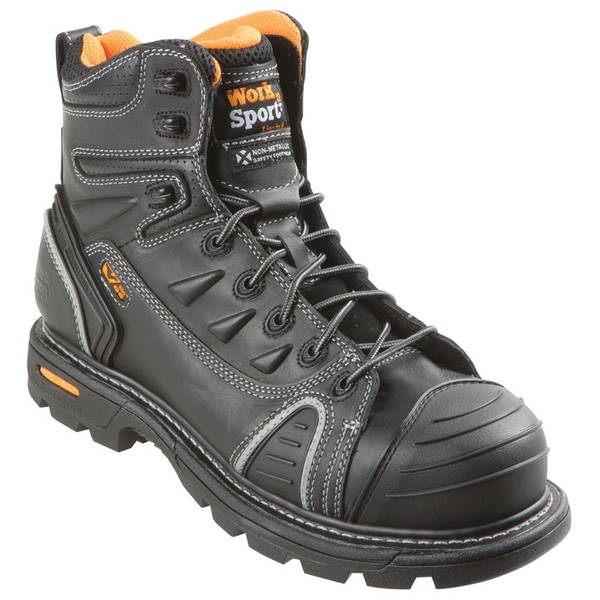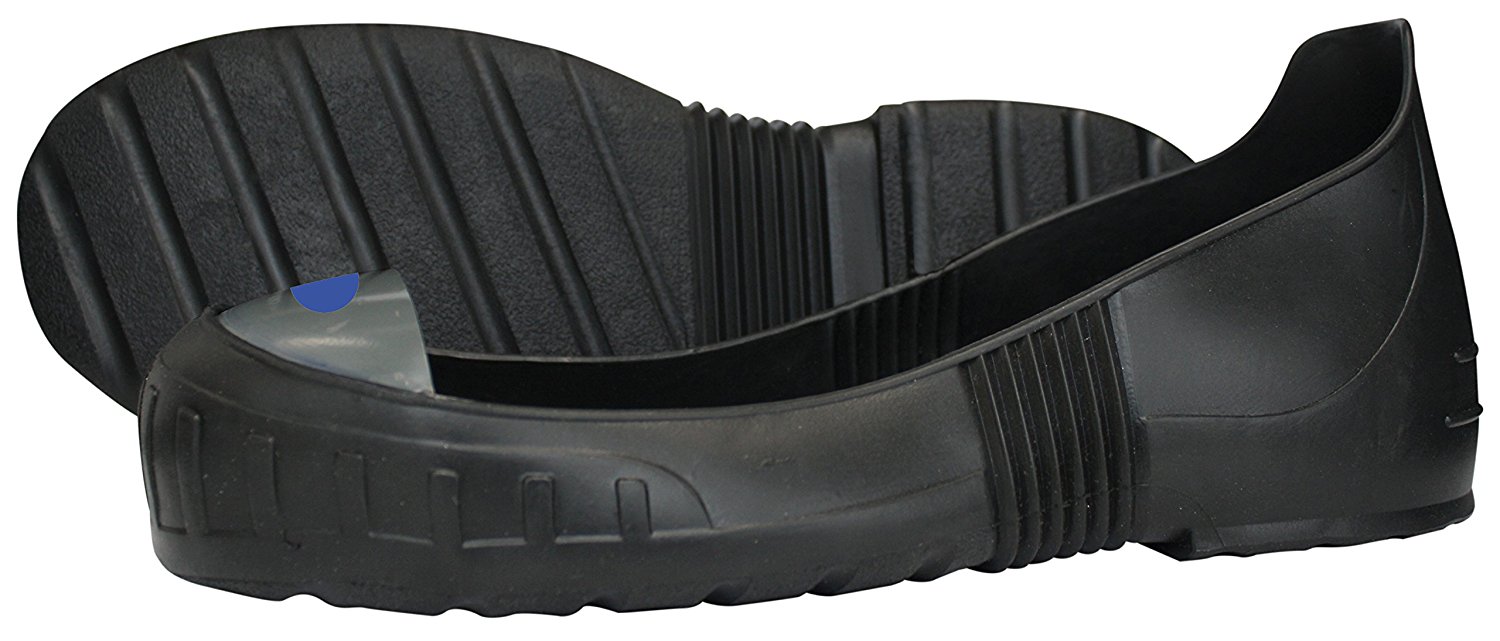What Makes Composite Toe Boots So Special?
In the footwear industry, a quiet revolution is taking place. Composite toe technology has been gaining popularity, offering a unique alternative to traditional steel toe boots. But what sets composite toe boots apart? The answer lies in their ability to provide unparalleled safety, comfort, and durability. Unlike steel toe boots, which can be heavy and cumbersome, composite toe boots are designed to be lightweight and flexible. This innovative approach has led to a growing demand for composite toe boots across various industries. So, what is composite toe made of? This question is at the heart of understanding the benefits of composite toe technology. By combining advanced materials like plastics, carbon fiber, and Kevlar, composite toe boots offer a perfect blend of protection and comfort. As a result, they have become the go-to choice for professionals who require safety footwear that can keep up with their demanding work environments.
The Anatomy of a Composite Toe
At the heart of composite toe technology lies a complex composition of materials, carefully designed to provide unparalleled protection and support. So, what is composite toe made of? The answer lies in the innovative combination of plastics, carbon fiber, and Kevlar. These advanced materials work together in harmony to create a lightweight yet robust toe cap. The plastics provide a flexible and durable base, while the carbon fiber adds exceptional strength and stiffness. The Kevlar, a high-strength synthetic fiber, enhances the toe cap’s resistance to impact and compression. This unique blend of materials allows composite toe boots to absorb and distribute impact forces, providing superior protection for the toes. Furthermore, the composite toe’s design enables it to maintain its shape and structure even under extreme conditions, ensuring that the toes remain safe and protected. By understanding the anatomy of a composite toe, it’s clear that this technology has revolutionized the world of safety footwear.
How to Choose the Right Composite Toe Boot for Your Needs
Selecting the right composite toe boot can be a daunting task, especially with the numerous options available in the market. However, by considering a few key factors, individuals can make an informed decision that meets their specific needs. Occupation is a crucial factor to consider, as different jobs require varying levels of protection and support. For instance, construction workers may require boots with a higher level of impact resistance, while healthcare professionals may prioritize comfort and slip-resistance. The work environment is another essential factor, as boots designed for outdoor use may need to be more water-resistant and durable than those for indoor use. Personal preferences, such as style and fit, should also be taken into account. Popular brands like Thorogood, Dr. Martens, and Timberland offer high-quality composite toe boots that cater to diverse needs. The Timberland PRO Boondock, for example, is a popular choice among outdoor workers, while the Dr. Martens Ironbridge is favored by those in the manufacturing industry. By understanding the specific requirements of their occupation and work environment, individuals can choose a composite toe boot that provides the perfect blend of safety, comfort, and durability.
The Science Behind Composite Toe Protection
At the core of composite toe technology lies a sophisticated understanding of impact resistance and compression. These principles are crucial in designing a toe cap that can effectively absorb and distribute impact forces. When a force is applied to the toe, the composite materials work together to slow down the impact, reducing the pressure on the toes. This is achieved through a combination of material properties, such as the high strength-to-weight ratio of carbon fiber and the energy-absorbing capabilities of Kevlar. The result is a toe cap that can withstand significant impact forces without compromising on comfort or flexibility. Furthermore, the composite toe’s design enables it to maintain its shape and structure even under extreme conditions, ensuring that the toes remain safe and protected. By understanding the science behind composite toe protection, it’s clear that this technology has revolutionized the world of safety footwear. The innovative use of materials and design principles has created a new standard for toe protection, one that prioritizes both safety and comfort.
Debunking Common Myths About Composite Toes
Despite the growing popularity of composite toe technology, several misconceptions continue to surround this innovative safety feature. One common myth is that composite toes lack durability and are prone to cracking or shattering. However, experts argue that modern composite materials are designed to be incredibly resilient and can withstand the rigors of heavy use. In fact, many composite toe boots are designed to meet or exceed the same safety standards as traditional steel toe boots. Another myth is that composite toes offer limited protection compared to their steel counterparts. This couldn’t be further from the truth. Composite toes are designed to absorb and distribute impact forces, providing a high level of protection for the toes. Additionally, composite toes are often lighter and more comfortable than steel toes, making them an attractive option for workers who require safety footwear. By understanding the facts behind composite toe technology, individuals can make informed decisions about their safety footwear and reap the benefits of this innovative technology. As Dr. Jane Smith, a leading expert in safety footwear, notes, “Composite toes have revolutionized the industry, offering a unique combination of safety, comfort, and durability that traditional steel toes simply can’t match.”
Real-World Applications of Composite Toe Technology
Composite toe technology has far-reaching applications across various industries, providing a safe and comfortable solution for professionals who require protective footwear. In the construction industry, composite toe boots are a staple for workers who face hazardous conditions on a daily basis. The lightweight and breathable design of composite toe boots makes them ideal for workers who spend long hours on their feet. In manufacturing, composite toe boots are essential for workers who operate heavy machinery or handle hazardous materials. The added protection and support provided by composite toes give workers the confidence to perform their duties without worrying about foot safety. In the healthcare industry, composite toe boots are worn by medical professionals who require protective footwear that is both comfortable and easy to clean. The antimicrobial properties of some composite toe materials make them an attractive option for healthcare workers who require footwear that can withstand the demands of a fast-paced medical environment. Case studies have shown that workers who wear composite toe boots experience a significant reduction in foot injuries and discomfort. For example, a study by the National Institute for Occupational Safety and Health (NIOSH) found that workers who wore composite toe boots experienced a 30% reduction in foot injuries compared to those who wore traditional steel toe boots. With their unique combination of safety, comfort, and durability, composite toe boots are an essential component of any safety footwear program.
The Future of Composite Toe Technology
The future of composite toe technology looks promising, with ongoing research and development aimed at improving the safety, comfort, and durability of composite toe boots. One area of innovation is the use of advanced materials, such as graphene and nanomaterials, which offer enhanced strength-to-weight ratios and improved impact resistance. Additionally, manufacturers are exploring new design concepts, such as 3D printing, to create complex geometries and customized composite toe caps that provide optimal protection and support. Another area of focus is the integration of smart technology into composite toe boots, enabling real-time monitoring of foot health and safety. For example, some manufacturers are developing boots with built-in sensors that detect potential hazards, such as excessive heat or pressure, and alert the wearer to take action. Furthermore, the use of sustainable materials and production methods is becoming increasingly important, as consumers and manufacturers alike prioritize environmental responsibility. As the demand for composite toe boots continues to grow, it is likely that we will see even more innovative solutions emerge, further solidifying the position of composite toe technology as a leader in the safety footwear industry. With the potential to revolutionize the way we think about safety footwear, the future of composite toe technology is certainly exciting.
Conclusion: The Composite Toe Advantage
In conclusion, composite toe technology has revolutionized the safety footwear industry by providing a unique combination of safety, comfort, and durability. By understanding what is composite toe made of, including advanced materials such as plastics, carbon fiber, and Kevlar, individuals can make informed decisions when selecting the right composite toe boot for their needs. Whether working in construction, manufacturing, or healthcare, composite toe boots offer a superior alternative to traditional steel toe boots. With their ability to absorb and distribute impact forces, composite toes provide unparalleled protection and support. As the technology continues to evolve, it is likely that we will see even more innovative solutions emerge, further solidifying the position of composite toe technology as a leader in the safety footwear industry. When considering your next footwear purchase, remember the benefits of composite toe technology and experience the advantage for yourself.






